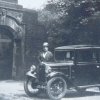The name ‘Langdale’ had been given to many Sunderlands since the marriage, in c.1615, between Abraham Sunderland and Elizabeth Langdale, whose brother, Sir Marmaduke, later became High Sherriff of Yorkshire. Their son, Langdale Sunderland, was a captain of Royalist forces in the Civil War. He kept a troop of horse at Coley Hall and saw service at the Battles of Worcester, Marston Moor, where he was wounded, and Adwalton Moor, and is also reputed to have been with Charles I in Boscobel Wood when the king hid in an oak tree.
In 1646 Langdale Sunderland was fined £878 for his part in the Royalist cause. He petitioned Parliament, saying that he had been “unhappily persuaded to take upon him the command of Captain of a troop of horse” and that he was “heartily sorrowful for his error”. How sincere Langdale was in his contrition is uncertain. He had contributed £1,500 a year to the Royalist cause and it was perhaps convenient for his petition that his active participation in the war had been curtailed by the wounds he received at Marston Moor.
In 1647 the frontage of the hall had been seriously damaged during an attack by Commonwealth forces. Two years later Langdale repaired the damage and built the present gateway. Carved on the gate are the date, 1649, a horse and hound, and the double cross of the Knights of St. John of Jerusalem, who owned extensive land in the area, and had a priory/hospital on the site of Coley Hall in the twelfth century. The gate served no functional purpose in 1649, as the wall which separates the hall from Coley Hall Lane was built at a later date, and it is possible that its erection was as defiant a gesture as Langdale Sunderland dared to make to the memory of his king, Charles I, executed in that year.
RMH

